Your Ultimate Guide to Kicking Household Dust to the Curb for Good
I’ve spent more than two decades working in people’s homes, and let me tell you, I’ve seen it all. From sleek city apartments to charming old farmhouses where a new layer of fine soil seems to appear every single day. But you know the one thing they all have in common? Dust. It’s the one battle everyone is fighting.
In this article
Most folks think dusting is just about making the house look presentable. But honestly, it’s so much more than that. Managing dust is really about controlling your home’s environment and looking out for your health. It’s not just a gray film on your furniture; it’s a wild mix of particles from both inside and outside your home.
Over the years, I’ve helped clients with serious allergies, new parents worried about their babies, and people who were just plain tired of a perpetually dusty house. And I learned you can’t just wipe dust away and call it a day. That’s a recipe for frustration. You have to get smart about where it comes from, how it travels, and the right way to actually capture it. This isn’t about some miracle spray or a high-tech gadget you saw online. It’s about a simple, systematic approach. We’re going to dive into how to stop dust at the source, filter it out of the air, and then remove it from your surfaces the right way.
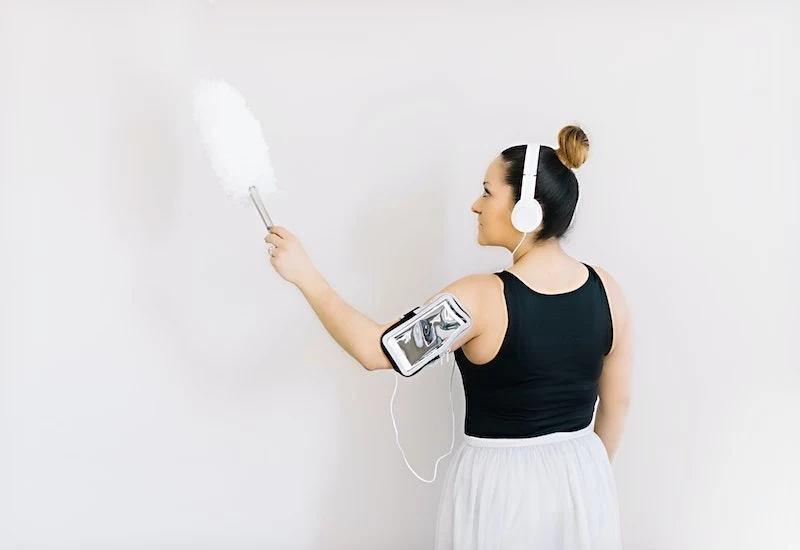
So, What Exactly Is This Stuff We Call Dust?
To really win the war on dust, you need to know your enemy. It’s not just one thing—it’s a unique cocktail of tiny particles that’s different in every single home. My whole perspective on this changed when I started working with an indoor air quality consultant for some highly sensitive clients. We weren’t just cleaning anymore; we were basically managing microscopic ecosystems.
If you were to look at a typical dust sample under a microscope, here’s what you’d likely find:
- Human Skin Cells: Yep, this is the main ingredient, often making up a huge chunk of household dust. We all shed skin cells constantly, and these little flakes are the primary food source for dust mites. (Sorry for the visual!)
- Fibers from… Everywhere: Your clothes, towels, bedding, and carpets are always shedding tiny fibers. Cotton, wool, polyester—they all break down over time and end up floating around.
- Outdoor Grime: Every time a door or window opens, you’re inviting in fine particles of soil, pollen, and sand. It also gets tracked in on shoes and clothes, no matter how careful you are.
- Pet Dander: If you have furry friends, their dander is a huge contributor. And it’s not just their hair; it’s microscopic skin flakes. Proteins from their saliva can also hitch a ride on these particles, which is often what triggers allergies.
- Food Debris: Tiny crumbs and particles from cooking and eating inevitably end up on the floor and in the air, joining the dust party.
- Pollutants: This is the part that I find most concerning. Dust acts like a tiny sponge for chemicals. It can soak up soot from traffic, residue from cleaning products, and even nasty stuff like lead from old paint or pesticides from the garden.
By the way, static electricity is a huge player in all of this. Ever wonder why your TV screen is a dust magnet? Many plastic surfaces have a static charge that actively pulls dust particles right out of the air. This is exactly why microfiber cloths are a game-changer—they use that same static charge to attract and trap dust instead of just flinging it around.
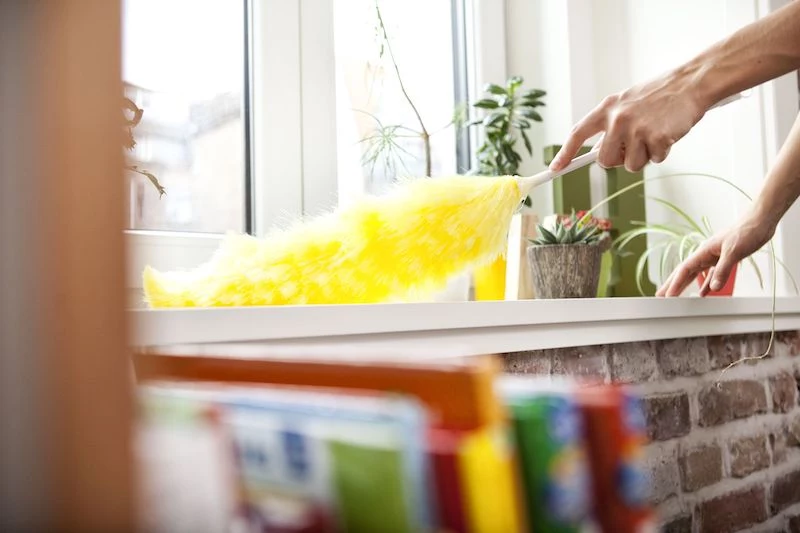
My Three-Point Strategy for True Dust Control
In my business, we don’t just clean; we follow a system. I teach everyone on my team to think in three stages: Source Control, Air Filtration, and Surface Removal. If you skip the first two, you’ll be stuck on a hamster wheel of endless dusting. Let’s break it down.
1. Source Control: Stop Dust Before It Gets In
This is, without a doubt, the most important step. If you can cut down on the amount of dust entering your home, you’ve already won half the battle. This is where I’ve seen clients get the biggest results.
Quick Win: Feeling overwhelmed? Start here. Enforce a ‘no shoes in the house’ rule starting today. It costs nothing and makes a massive difference almost immediately. Set up a little bench and a shoe rack by your main door to make it an easy habit for everyone to adopt.

For even better results, use the Two-Mat System. A single doormat just doesn’t cut it. You need one outside and one inside. The outside one should be a coarse, scraper-style mat to knock off the big stuff like mud and grit. You can find a good one for between $20 and $40. The inside mat should be a large, absorbent, carpet-style mat to catch the finer dust and moisture. Quick tip: Aim for an inside mat large enough for someone to take two full steps on it before they reach your floors. And make sure it’s machine washable—toss it in the wash weekly.
Finally, seal up the gaps. Air leaks are dust leaks. I once worked in an older home where the owner was driven crazy by a constant layer of fine, blackish dust. After checking everything, we discovered a tiny, unsealed gap around the fireplace flue that was pulling in soot. On a windy day, hold a stick of incense near your windows and doors. If the smoke wavers, you’ve got a leak. Some cheap weatherstripping and caulk from Home Depot can fix that right up.

2. Air Filtration: Catch What’s Already Floating Around
No matter how good your source control is, some dust will get in and start circulating. This is where your home’s systems can do the heavy lifting for you.
Your HVAC filter is your first line of defense. Think of it as a whole-house air cleaner. The key is to use the right one, and you can tell by its MERV rating (Minimum Efficiency Reporting Value).
- MERV 1-4: These are the cheap, flimsy fiberglass filters. To be frank, they do very little for your air quality and mostly just protect your HVAC fan from large debris.
- MERV 8-11: This is the sweet spot for most homes. These pleated filters are fantastic at grabbing pollen, dust mite debris, and pet dander. I usually recommend starting with a MERV 8. A two-pack will run you about $30 and is well worth the investment.
- MERV 13+: These are for high-efficiency situations, like for people with severe respiratory issues. They can capture bacteria and even some viruses.
Heads up! Don’t just slap a MERV 13 filter into your system without checking first. The high density can restrict airflow and strain your HVAC’s motor, leading to higher energy bills or even costly repairs. If you think you need one, it’s best to consult an HVAC pro to see what your system can safely handle.

For specific rooms, especially the bedroom, a portable air purifier is a fantastic investment. Look for a unit with a true HEPA filter, which is certified to capture 99.97% of tiny 0.3-micron particles. Also, check the CADR (Clean Air Delivery Rate) to make sure the unit is powerful enough for your room size. A reliable one for a standard bedroom will cost between $100 and $300.
3. Surface Removal: The Art of Actually Getting Rid of Dust
This is the final step: removing the dust that has settled. Your tools and technique here are everything.
First things first: please, throw away your feather duster. They are dust-spreaders, not dust-collectors. The absolute best tool for the job is a high-quality microfiber cloth. You only need to get it slightly damp with water. And when I say damp, I mean wring it out until it’s not dripping at all. You want it to grab dust, not leave water streaks behind.
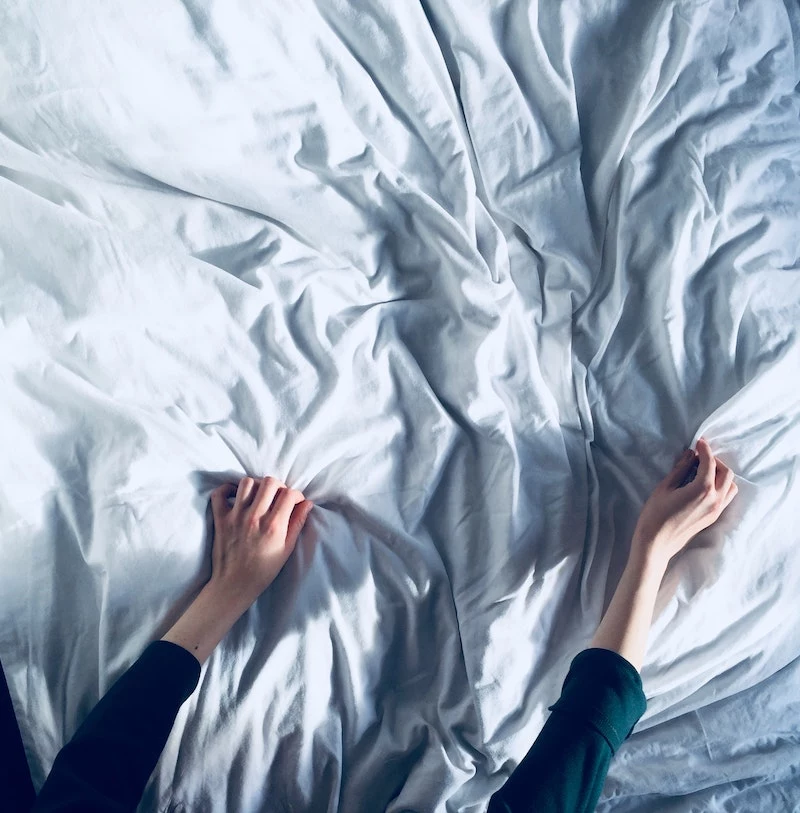
Always clean from top to bottom. It’s just simple gravity. Dust the highest surfaces first—ceiling fans, picture frames, the tops of bookshelves—and work your way down. The floor is always last. This way, any dust you knock loose gets captured when you vacuum.
A lesser-known trick for ceiling fans: Grab an old pillowcase. Slide it over one of the blades, then gently pull it back, enclosing the blade. All the dust, dirt, and gunk gets trapped inside the pillowcase instead of raining down on your face and furniture. Just take the pillowcase outside, shake it out, and toss it in the wash. Genius!
And that brings us to vacuuming. A good vacuum is non-negotiable. Look for one with a sealed system and a HEPA filter. The sealed system is crucial—it ensures all the air pulled in actually goes through the filter instead of leaking out the cracks. From my experience, a good quality canister or upright vacuum is a solid investment, usually in the $300 to $800 range. For people with allergies, I often suggest a bagged model. Emptying a bagless canister can release a poof of fine dust right back into the air, while a sealed HEPA bag traps it all for easy disposal.
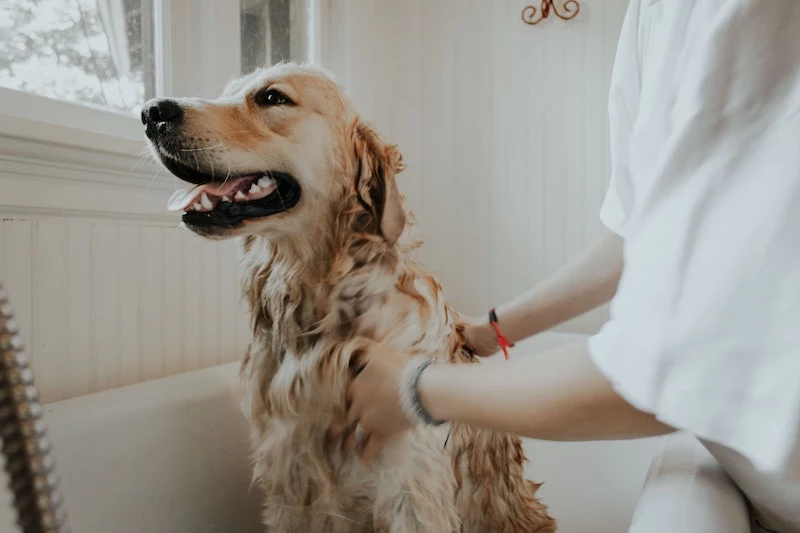
Your Dust-Busting Shopping List
Ready to get started? Here’s a quick list of the things that will make the biggest impact, along with some ballpark prices so you know what to expect.
- High-Quality Microfiber Cloths: A pack of 10-12 for about $15.
- Scraper-Style Outdoor Mat: Around $20-$40.
- Washable Indoor Mat: Around $30-$60, depending on size.
- Pleated MERV 8 HVAC Filters: About $30 for a two-pack.
- Allergen-Proof Pillow Covers: Start around $25 for a set of two.
- HEPA Air Purifier (for a bedroom): A good one will be in the $100-$300 range.
Putting It All Together: A Realistic Plan
A perfectly dust-free home isn’t realistic, so don’t drive yourself crazy. The goal is a manageable system.
The Basic Weekly Plan (For Everyone):
This whole routine should take you about 60-90 minutes for an average-sized home, once you get the hang of it.
- Entryways: Shake out your mats. If they’re washable, toss them in the laundry.
- Dusting: With your damp microfiber cloth, dust all the main surfaces, working from top to bottom.
- Linens & Upholstery: Change and wash your bedsheets—use hot water (at least 130°F or 55°C) to kill dust mites. If you have pets, give your furniture a quick vacuum.
- Floors: Vacuum everything last. Go slowly to let the machine do its work.
For Allergy Sufferers (The Next Level):

If you or someone in your family has asthma or bad allergies, the bedroom is your sanctuary. Focus your energy there.
- Encase Everything: Get allergen-proof encasements for your mattress, box spring, and pillows. A good mattress encasement might run you $60-$100, but it’s worth every penny. These zippered covers trap dust mites and their waste.
- Wash Bedding Weekly in Hot Water: This is a must for killing dust mites. No excuses!
- Run an Air Purifier: Keep a HEPA air purifier running in the bedroom, especially at night with the door closed.
- Declutter: Dust loves clutter. Fewer trinkets sitting out means fewer surfaces for dust to land on. Opt for closed storage over open shelves.
- Rethink Your Curtains: Heavy drapes are major dust traps. Switch to washable curtains or blinds that you can easily wipe down.
When You Might Need to Call a Professional
Sometimes, you do everything right and still have a major dust problem. Before you call in the pros for duct cleaning, be cautious. Environmental agencies state there’s often no need unless you see visible mold, have had a major renovation, or know there’s a pest infestation in your vents. A shoddy duct cleaning can make things worse by kicking up settled dust.
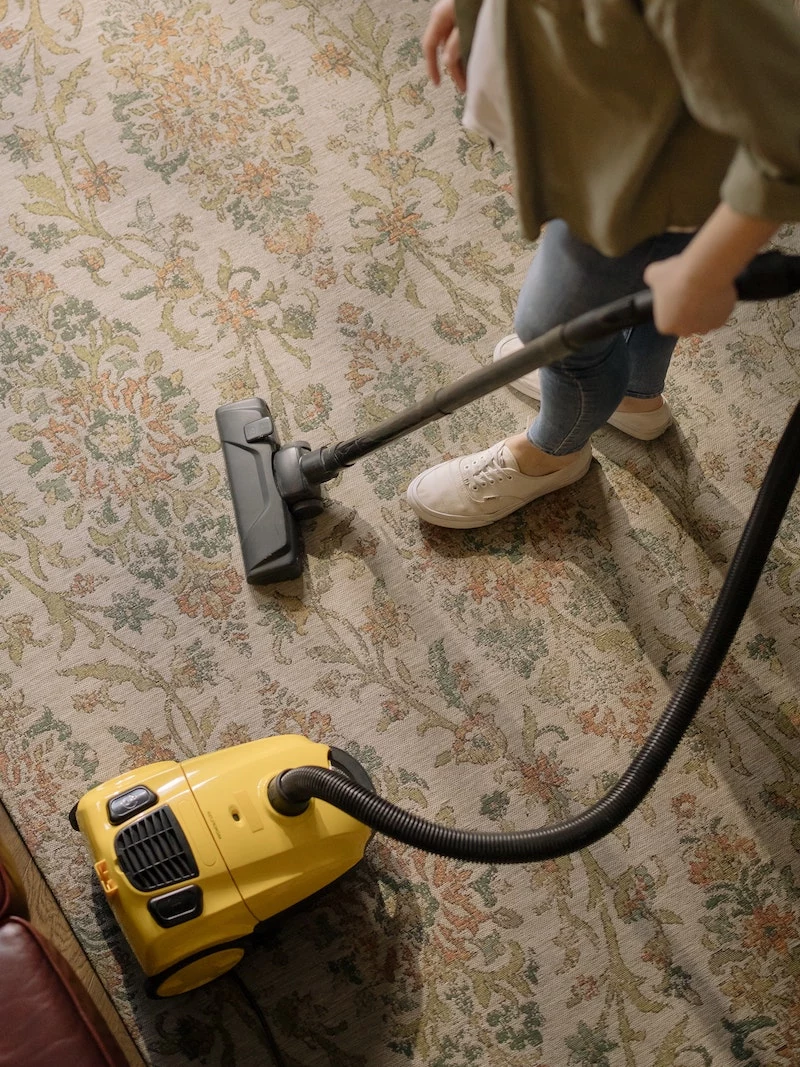
However, some things are NOT a DIY job. If your home was built before the late 1970s, your dust could contain lead from old paint. If you suspect asbestos or find a large patch of mold, please don’t disturb it. Those situations require certified abatement professionals with the right gear to handle things safely.
At the end of the day, controlling dust is a marathon, not a sprint. But if you focus on stopping it at the source, filtering your air, and using the right removal techniques, you can absolutely create a system that works for you. You’ll spend less time cleaning and more time enjoying a healthier, more comfortable home.
Inspirational Gallery
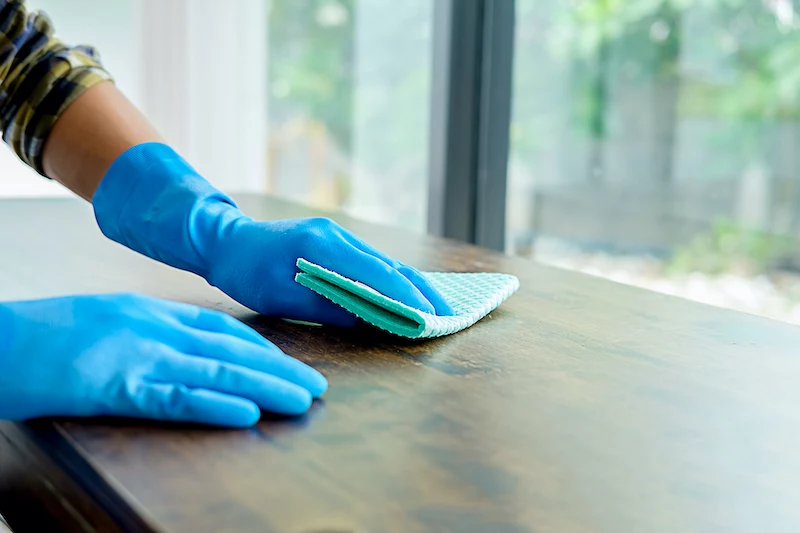
An estimated 20 million Americans have a dust mite allergy.
This surprising statistic highlights why the right tools matter. While many grew up using feather dusters, they often do more harm than good by scattering these microscopic allergens into the air. Modern tools like a high-quality, high-GSM (grams per square meter) microfiber cloth or an electrostatic duster from a brand like Swiffer are designed to trap and hold onto particles. When damp-dusting, the cloth’s fibers physically grip dust, dander, and mites, removing them from the environment for good rather than just redistributing them.










